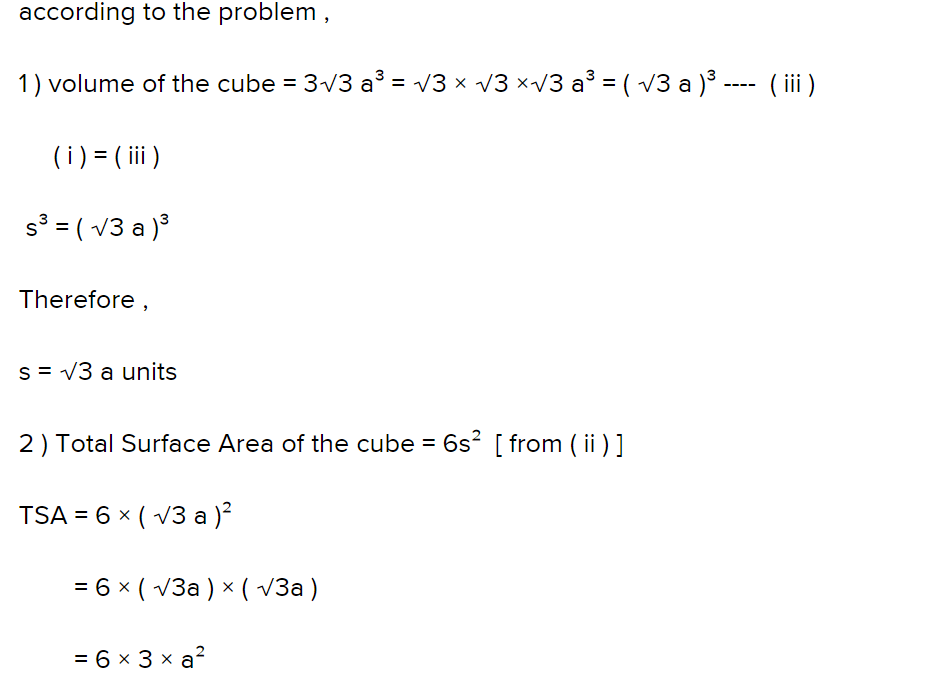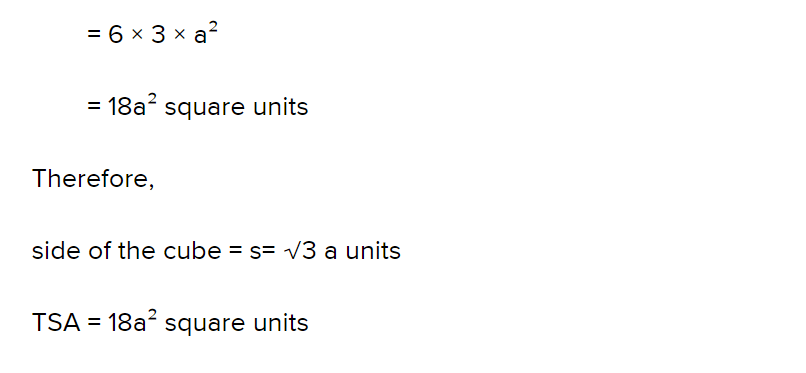Test: Volume of a Cuboid - EmSAT Achieve MCQ
20 Questions MCQ Test - Test: Volume of a Cuboid
Rain water fills a tub of dimensions 11 m × 7 m × 2 m. The capacity of the tub is
The volume of the rectangular tank with base area 76 m2 and height 2 m is
Four cubes each of side 5 cm are joined end to end. The volume of the resulting cuboid is
A cubical tank has an edge equal to 6 m. The amount of water it will contain when it is one-third filled is
The lateral surface area of a cube is 100 m2. The volume of the cube is:
A rectangular tank has dimensions 4 m × 3 m × 3 m. The amount of water it will contain when it is two-third filled is
Three cubes of side a are joined end to end. What is the surface area of the new solid thus formed?
The capacity of the tank of dimensions 7 m × 7 m × 5 m is
Find the volume of a cubical box whose surface area is 13.50 cm2.
A cubical tank has base area of 49 m2 and is half filled. The amount of water it can hold is
The volume of a cube is 343 cm3. Its surface area would be
The volume of a cylinder of altitude 15 cm is 1200 cm3. The area of its base is
The volume of water in a cuboidal container of dimensions 50 cm, 20 cm and 30 cm will be
If the volume of a cube is 3√3a3, then total surface area of the cube is
Seven cubes each of sides 4 cm are joined end to end. The volume of the resulting cuboid would be
A measurement box measures 18 cm × 6 cm × 2 cm. The volume of the packet containing 12 such boxes is
Find the edge of a cube of volume equal to the volume of a cuboid of dimensions 24 cm × 12 cm × 6 cm
The areas of three adjacent faces of a cuboid are a, b and c. If its volume is V, then V =
Find the number of bricks, each measuring 25 cm long, 12.5 cm high and 7.5 cm thick required to construct a wall 6 m long, 5 m high and 0.5 m thick, while the cement and sand mixture occupies ignored.
A cube of edge 4 cm is converted to a cuboid of height 4 cm, so the area of the base of the cuboid must be





















